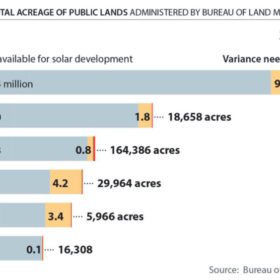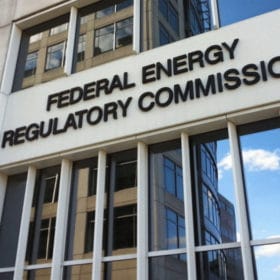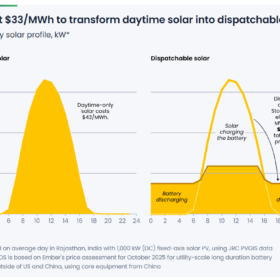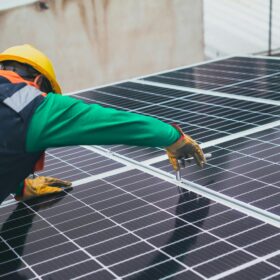Morning Brief: Navajo Transitional Energy proposes 200 MW of solar, Lyft joins EV 100
Also in the brief, SunPower provides a Maxeon update, Solar Support, DEPCOM Power and Power Factor partner on disaster recovery, KB home is the first builder to offer OneRoof and more.
Bringing solar to the heart of coal country
The Solar Workgroup of Southwest Virginia, spurred on by Virginia’s pro-solar legislative spring, has released a request for qualifications, seeking a partner to co-develop commercial-scale solar projects in seven coal counties.
Solar opportunities ‘ignored’ across 100 million acres in the Southwest
The Bureau of Land Management “has ignored most possibilities” for utility-scale solar “on its vast land holdings across the solar-rich Southwest,” says a paper. Renewable energy development accounts for less than 1% of economic activity on BLM lands, while oil and gas account for 70%, according to BLM data.
Morning Brief: Sunrun launches residential energy storage virtual power plant, Panasonic expands its panel warranty
Also in the brief: Verizon is back at the bottom of Green America’s Clean Energy Wireless Scorecard, Solar United Neighbors and Vote Solar have submitted over 20,000 public comments against NERA, an early coal plant retirement and more.
Advanced macro grid initiative announced, with funding support from Bill Gates-backed group
Bill Gates and Breakthrough Energy see enhanced transmission as facilitating electrification and grid reliability. Increasing transmission development at the “seams” between regions could save consumers more than $47 billion and return more than $2.50 on every dollar invested.
Solar hosting capacity maps must be accurate to be useful
Solar hosting capacity maps, now required in seven states, show where solar can be added on a distribution circuit without incurring any grid expense—but only if those maps are accurate. California’s experience, says a policy paper, shows that best practice guidelines for validating maps are needed to aid state regulators.
Morning Brief: FERC denies MOPR review, Tesla’s longest-range Model S now goes 402 miles
Also in the brief: Community solar for Covid recovery, flaring wasted $750 million of natural gas, and coal’s descent.
SEIA calls on FERC to dismiss the petition to end net metering
The Solar Energy Industries Association makes the case for the Federal Energy Regulatory Commission to dismiss the petition, solely on legal grounds. A filing by Solar United Neighbors, Vote Solar and other groups makes a legal case and also rebuts the petition’s claims about net metering.
450 environmental, energy justice groups urge FERC to reject threat to net metering
Letter demands that net metering remain in state jurisdiction to ensure clean, resilient energy future.
Morning Brief: The racial inequity in clean energy and how to fight it
The industry is growing, but jobs and financial benefits are not distributed equally. Also in the brief: Large-scale battery installer NEC Energy Solutions is folding, and who is the New England Ratepayers Association?















